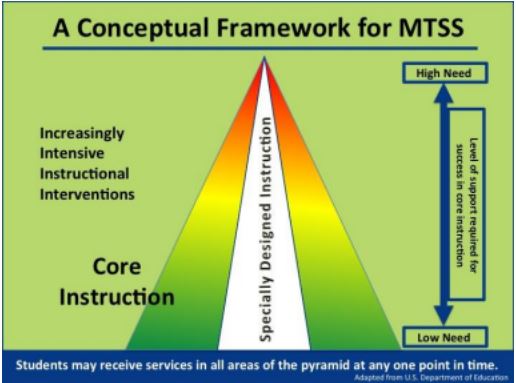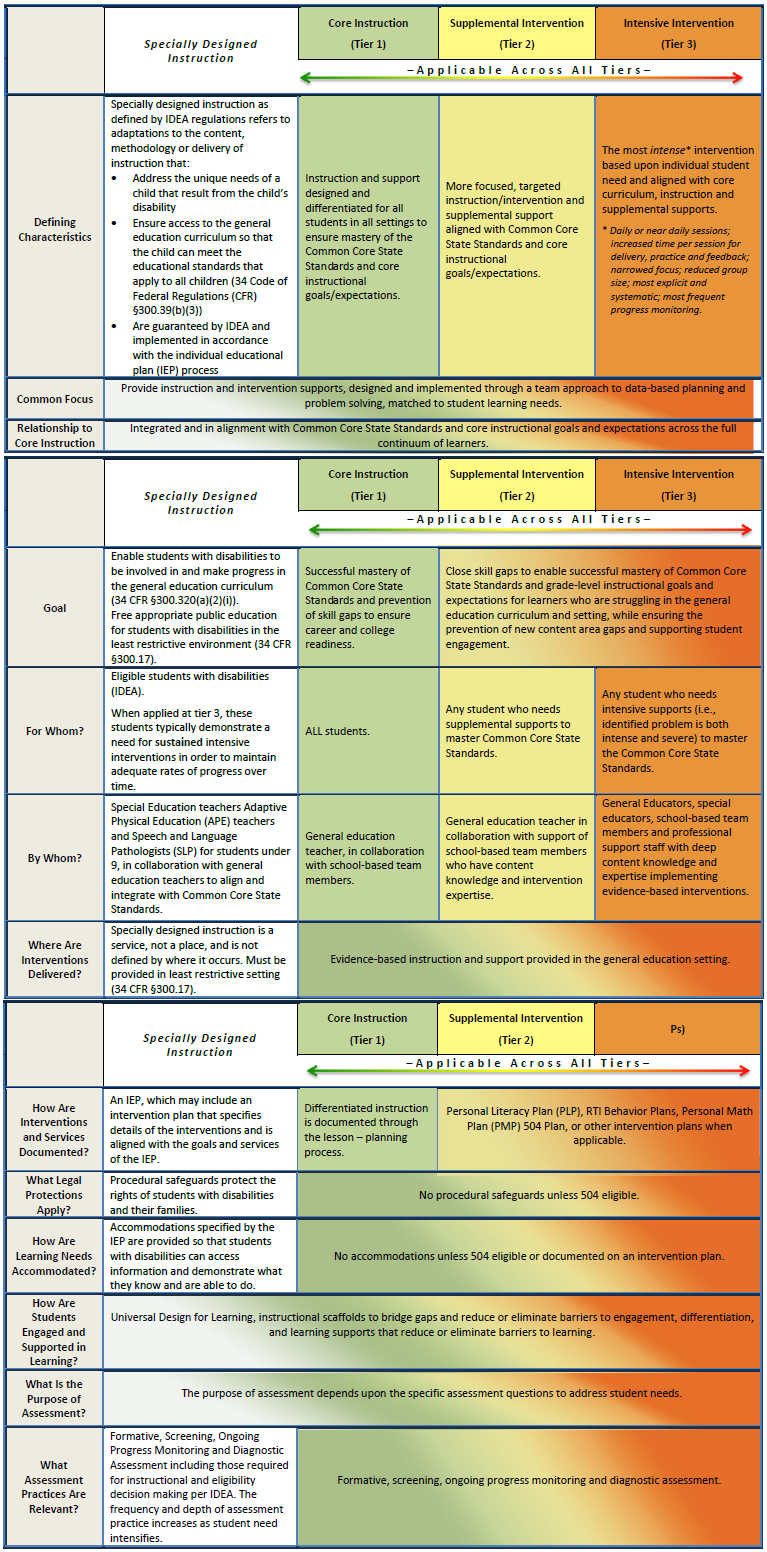District
School Committee
Committees
Meeting Stream and Recordings
Staff
Assessment
Online Systems
Families
Student Support Resources
Family & Community Engagement
Assessment
Online Learning
DEIB Holidays
SPECIALLY DESIGNED INSTRUCTION FOR STUDENTS WITH DISABILITIES WITHIN A MULTI-TIERED SYSTEM OF SUPPORTS
(Adapted from Florida’s Multi-Tiered System of Supports)
This document was developed to clarify the relationship between Specially Designed Instruction, Core Instruction, and Interventions within a multi-tiered system of supports (MTSS) for educators developing, improving, and maintaining systems of support for all students. The reauthorization of the Individuals with Disabilities Education Act (IDEA) in 2004 made it clear that students with disabilities are to be considered first and foremost as general education students. This distinction, along with the implementation of a multi-tiered system of supports and Common Core State Standards, has prompted educators to consider the characteristics that uniquely define special education.
The graphic below illustrates the integration of specially designed instruction within an MTSS. Instruction and interventions for all students are implemented using a data-based problem-solving process that matches the intensity of support to meet student needs (both strengths and weaknesses). Effective core instruction and interventions are provided for all students, including students with disabilities, who need various levels of supports to master grade-level Common Core State Standards. Students with disabilities are legally entitled to specially designed instruction, including intensive interventions, when the intensity of their needs warrants this level of support.

The table below provides an in-depth explanation of the similarities and differences – as well as the inter-relatedness – of Specially Designed Instruction, Core Instruction, and Interventions.

Adapted from Florida’s MTSS (http://www.florida-rti.org/educatorResources/addRes.htm)